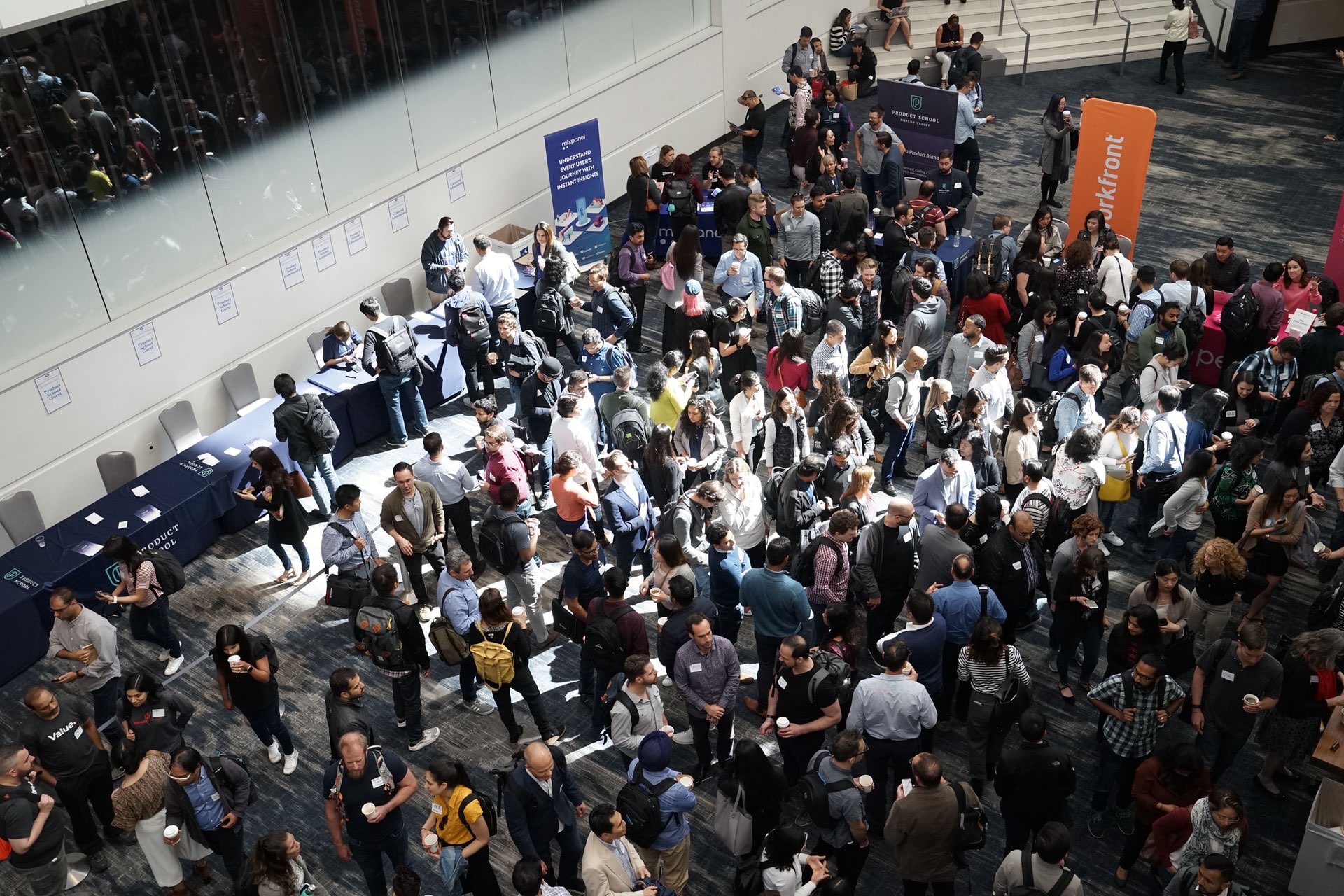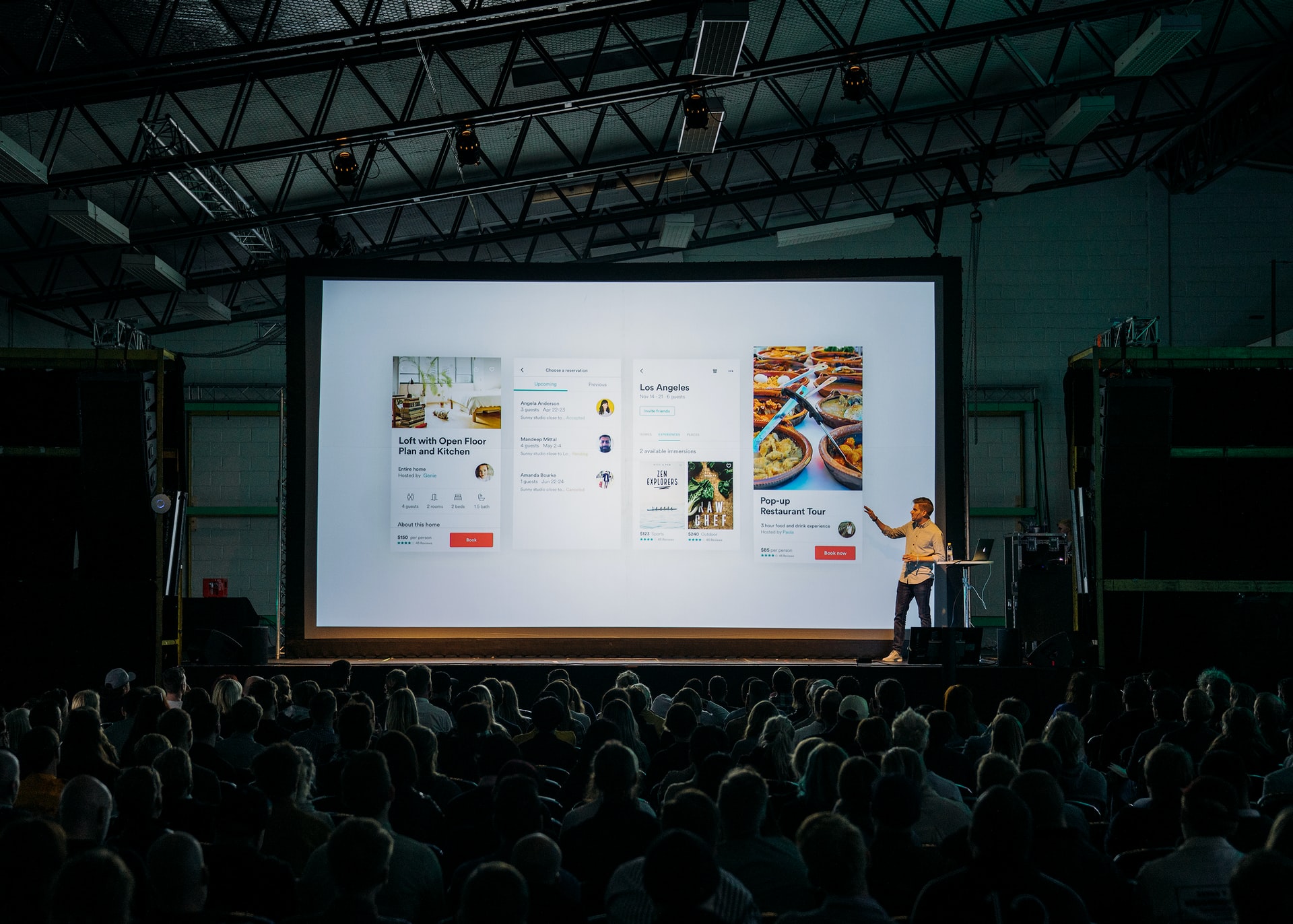Whether you’re planning an entire trade show or just helping one exhibitor, it’s essential to know these common – but unique – trade show terms.

Trade shows are a massive pillar of the event planning industry. These large conventions are gatherings for hundreds to thousands of people generating serious recurring business for event planners. However, this particular type of event comes with its own set of vocab. Don’t be frazzled next time you hear a new word at a trade show. Just read this list of ten trade shows terms you need to know as an event planner.
1. Trade Show (B2B)
Define “trade show”… really? This is first on the list of trade show terms because you need to know what makes a trade show different from other similar events.
A trade show is described as a B2B (business to business) event. That means its vendors and exhibitors are presenting to their peers. Trade shows focus on trade-related topics, so attendees come to learn about one unique industry. Don’t confuse a trade show with a consumer show (up next).

2. Consumer Show (B2C)
A consumer show is different from a trade show because it’s B2C (business to consumer). That means its exhibitors showcase products and services directly to new potential buyers. At consumer shows, attendees come to discover new products, interact with brands, and socialize. They can usually shop (or pre-order) on site.
3. Virtual Trade Show
Virtual trade shows try to encompass all the facets of a traditional trade show but virtually. Attendees can experience the event digitally through webinars, portals, and live streams. Due to COVID-19, digital conferences are becoming the new normal in event planning.
Related article: Planning a Virtual Event: Almost Everything You Need to Know
4. Airwalls
If you’ve been to a trade show, you’ve undoubtedly encountered airwalls. Airwalls are large portable panels that help partition or divide an open room or space. At trade shows, airwalls are commonly used to create meeting rooms or temporary offices within a convention hall.
5. Keynote

No, it’s not just Powerpoint for Apple computers. A keynote in the event world refers to the headline speaker or presenter. Typically, a keynote is a notable and well-respected figure in or related to the industry. The keynote presentation usually inspires the audience, kicks off the event, and/or simply serves as a motivator to attract attendees.
6. Breakout Rooms
These versatile spaces are must-haves at a trade show. Breakout rooms typically refer to the smaller spaces or classrooms, where sessions take place. A percent of attendees may go into a breakout room while others roam the trade show floor or visit concurrent sessions.
Related article: 10 Event Planning Software & Tech Terms to Know
7. Floor Order vs. Floor Plan
They sound similar, but beware, they are different terms. A floor order is an order for additional services after the trade show installation has already begun. A floor order happens after an Advance Order, the order made prior to the show. These orders are for exhibitor items like electricity plug-ins, wifi, or furniture rentals. Now, a Floor Plan regards the map. A floor plan displays the size and locations of every exhibitor’s space.
8. Traffic Flow
Have you ever gotten lost on a trade show floor? After so many booths, they blend together! That’s why traffic flow is essential. Traffic flow is the movement of visitors through a trade show hall. One way to help the traffic flow is with aisle carpet or installing/displaying arrows to help guide attendees.
9. Load In, Loadout
Load in is the time window dedicated for exhibitors to set up their space, install equipment, test AV, make last-minute floor orders, etc. On the flip side is loadout. This is the time for exhibitors to breakdown their booths, prepare crates for shipping, and simply get out! Loadout can also be referred to as breakdown or strike. Load in and loadout are good things to include in your event timeline.
(tip: use our event planning software to build it).
10. Space Only
A pre-event term you may encounter is space only. This term refers to an exhibitor reserving a specific area on the trade show floor. Space only, however, means the exhibitor must provide their own booth, exhibitor stand, furniture, etc. This also means that exhibitors have more creative freedom for installs!
Ten trade show terms later, you’re ready to plan a trade show! These different terms should help you with trade show and beyond. For many more exhibitor specific terms, check out this helpful glossary from Exhibitor Online!
Amanda Larson, CED, is a Certified Event Designer, marketer, and content creator. With a degree in journalism and special events management, Amanda has worked in marketing and events for both international startups and Fortune500 companies. She specializes in digital branding, copywriting, and graphic design freelancing for clients globally.
You can read other articles by Amanda here:

